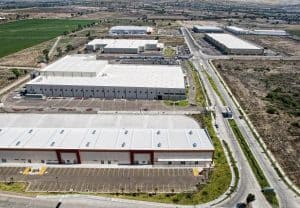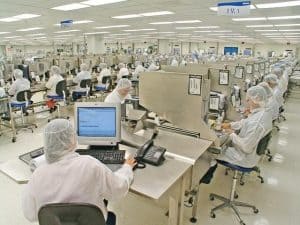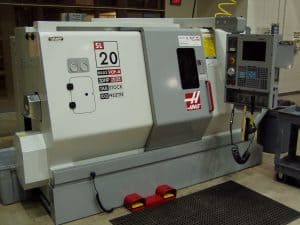Mexico site selection offers broad choices for manufacturers
Although the industrial landscape was appreciably different at the turn of the millennium, over the last several years, Mexico’s prominence on the global economic stage has become highly visible and indisputable. In terms of where to locate a manufacturing facility, today’s Mexico offers broad choices within a user friendly business environment and a varied geography.
During the opening years of the last century companies were flocking to what was then being widely hailed as the “world’s workshop.” China enjoyed a definitive and sizable advantage over Mexico vis a vis a substantial manufacturing wage differential. In 2003, for example, wages paid to workers in factories in Mexico, known as maquiladoras, were 188% higher when compared to those paid to their Chinese counterparts. During that time the Asian powerhouse was well on its way to supplanting Mexico as the United States’ foremost supplier of low-cost manufacturing labor. From 2001-2003, five hundred of Mexico’s approximately thirty-seven hundred maquiladoras were shuttered, as a direct result of competition from proliferating Chinese factories. Mexican government estimates from that period indicate that 218,000, mostly low-skill jobs in low-tech industries such as textiles and toy manufacturing, ventured across the globe chasing the “China price. Today that advantage has reversed itself. Because of this turn of economic events, Mexico site selection offers broad choices for companies seeking to expand their global footprint in an economically and strategically intelligent fashion.

A Well-Situated Geography
Given the changes in Chinese manufacturing wage structure, as well as periodic volatility in the prices of fuel, shipping costs and container availability, Mexico now irrefutably stands as the logical site selection choice for companies whose products’ end users are located in North American. As a result of this significant tectonic shift in global trade dynamics, companies that flocked to China at the beginning of the last decade in order to undercut their competitors’ prices and gain marketshare have been steadily making the migration back to North America over the last several years. In addition to wage considerations, during their stay in China, manufacturers saw the cost of transportation rise, as well as bore the costs of carrying more inventory and emergency stock to reduce the risk of greater lead times to market. While the trip from Southeast China to a products’ end user in the United States and Canada eats up an average of two week’s time on the calendar, items can be shipped from a Mexican production facility to anywhere in the US or Canada in a matter of days. Companies whose products are heavy in the design and engineering component have found that coordinating with foreign production teams half a world away is a much more challenging proposition than doing so with colleagues that are either in the same, or a convenient, time zone. Top executives have found that a flight lasting only a few hours is less draining than travel that often takes up to a full day to complete. Not only does Mexico site selection offer broad choices, but also offers advantages that result from physical proximity to market.
An Ample Available Workforce and Favorable Demographic

Recent Historic and Deep Reforms
Recognizing the need for economic policy reform in critical areas to drive and support future economic growth, historic and deep reform has been enacted in Mexico over the course of the last two years that will increase its site selection appeal, as well as will raise the job prospects and material well-being of its citizens. Significant recent change has occurred in the following areas:
- Taxation – In order to cease the continuation of the abuses related to the non-payment of Mexican value-added tax (VAT) on items that are imported, but not subsequently exported by manufacturers, tax reform measures were considered and passed by the Mexican Congress at the end of 2013, as well as at the beginning of 2014. Passed law mandated that companies manufacturing for export under the framework provided by Mexico’s IMMEX program pass a “certification” inspection. The certification process for IMMEX requires that manufacturers show proof that goods brought into the country temporarily for subsequent incorporation into finished products are, in reality, exported. Proof of this will exempt manufacturers from paying Mexico’s nation-wide value-added tax of 16% on items sourced outside of the country going forward. This move and others taken under through Mexican tax reform will, over the medium to long-term, enable the country’s government to increase the base from which it collects taxes. Mexico currently has on of the lowest tax to GDP ratios among Organization for Economic Co-operation and Development (OECD) countries. The result of broadening Mexico’s tax base to increase spending on infrastructure and education will enhance Mexico’s ability to influence more manufacturers to open shop within its borders.
- Energy – Mexican energy reform is truly historic. Since the expropriation of all reserves, facilities and foreign oil companies on March 18, 1938, the country’s 100% ownership of its energy industry has been a source of national pride and patriotism. Pragmatism kicked in, however, when economic policymakers realized that domestic resources alone were insufficient to access and supply the energy that Mexico will need to fuel its future growth. Energy reform legislation was passed by the Mexican Congress on December 12, 2013. For the first time since pre-nationalization foreign companies will be allowed to explore for oil and gas within Mexico’s national territory. Prior to reform, electricity costs were, on average, 4% lower for manufacturers than those found in China, while the price of Mexican natural gas was 63% lower than that charged for the fuel in the Asian nation. In addition to a wage advantage, energy reform give the country, in the medium term, the advantage of offering manufacturers competitively priced electricity and natural gas, which will increase its industrial site selection appeal.
- Labor law – Mexico has been historically criticized for the inflexibility of its labor laws. This circumstance has been been viewed as a significant drag on the country’s ability to generate jobs for its citizens. The Mexican Labor Reform of 2012 was undoubtedly the most sweeping change that Mexico’s government has implemented to the country’s labor statutes since the 1970s. The overhaul streamlined the cumbersome rules that many claimed discouraged smaller businesses from hiring workers, which had resulted in millions of Mexican workers seeking employment in the off-the-books, large informal sector of the country’s economy. The portion of the reform that will be of most benefit to foreign investors has to do with the issue of employment status. The new Mexican labor reform specifically allows for temporary and seasonal employment, basing pay on an hourly, minimum-wage standard. Companies may hire outsourced labor through an outsourcing firm, but only in special cases, and only if outsourced workers are guaranteed the same benefits as permanent staff. The new law also provides for a 30-day probationary period to confirm employee skills and abilities, thus limiting the risk to shouldered by employers in hiring new personnel.
- Telecommunications – Mexican telecommunications sector reform will bring benefits to the broader economy. Historically access to competitively priced telecommunications services was impeded by what has been, for all intents and purposes, a monopoly. Mexico’s market has historically been tightly controlled by government in terms of limited opportunities for investment by foreign capital, and has been the domain of very few domestic players. Today, a sole company controls of the lion’s share of the market for telecommunications services. America Movil, headed by one of the world’s wealthiest individuals, Carlos Slim, dominates eighty percent of the country’s landline phone market and seventy percent of wireless communications. Reform legislation passed in July of 2013 resulted in the opening of the Mexican telecommunication sector to foreign capital. As competition increases, prices, over time, will come down.

In addition to being physically well-situated as a nation, and having undertaken the aforementioned structural reforms to create a globally competitive and profit conducive business environment, Mexico has cultivated highly developed industrial clusters that are concentrated in specific geographic areas. Although not exclusive to the regions noted below, the presence of discernible, developed and concentrated grouping of like producers means that Mexico site selection offers broad choices in the following industries:
- Aerospace – Once an afterthought in the global aerospace industry, Mexico has experienced tremendous growth in the sector during the last decade. Today the country is the 12th largest exporter of aerospace and defense products worldwide, as well as is the sixth largest supplier of aerospace parts and equipment to the United States. During the course of the last ten years Mexico’s growth of aerospace exports has a achieve an annual growth of eighteen percent. Although located throughout the country, the approximately three hundred aerospace suppliers that are resident in Mexico are concentrated in the states of Baja California, Chihuahua, Nuevo Leon, Sonora and Queretaro.
- Automotive – Huge amounts of new automotive investment has been filtered into Mexico over the course of the last several years primarily from Asian and European OEMs. Most of this capital has found a home in the South Central Region of the country, more specifically in the Bajio Region which is comprised of the states of Guanajuato, Queretaro, Aguascalientes and Guadalajara. Significant new automotive investment has also landed in the interior state of San Luis Potosi. Today Mexico is ranked as the 8th largest producer of vehicles in the world, and is number four globally in terms of exports.
- Electronics– The state of Jalisco, and the city of Guadalajara in particular is the location of Mexico’s preeminent electronics cluster. A significant industry grouping is found in Tijuana, Baja California, as well as across the length of the US – Mexico border zone. A border location is the optimal place for electronics and other firms to locate that are affected by the need to cut turnaround times, as well as transportation costs.
- Medical devices – The major locations for medical device manufacturing clusters in Mexico are located in the state of Baja California, as well as across the length of the country’s border with the US. According to Mexico’s National Institute of Statistics and Geography (INEGI) the aggregate value of production derived from medical device manufacturing in Mexico in 2011 was an estimated US $8.6 billion. The same organization expects that the value of medical device production in Mexico will continue to rise throughout the decade and will total nearly US $15 billion by 2020.
The Whole Package
Since the country’s signing of the NAFTA in 2004, and as a result of its vigorous pursuit of free trade relationships with 44 nations since then, Mexico offers broad site selection choices to companies that are, or aspire to be, active players in the global economy. Now a powerhouse in global commerce, the country relies on a diversity of world-class exports to generate 61% of its annual GDP. Because of is physical attributes, as well as because of the recent economic policy choices made by its leaders, the time has come for Mexico to shine on the world’s stage. Mexican site selection options offer foreign investors “”the whole package.”
